In pictures: Jean-Michel Jarre's mindblowing studio
We discover the concept behind the synth legend's new album, Electronica
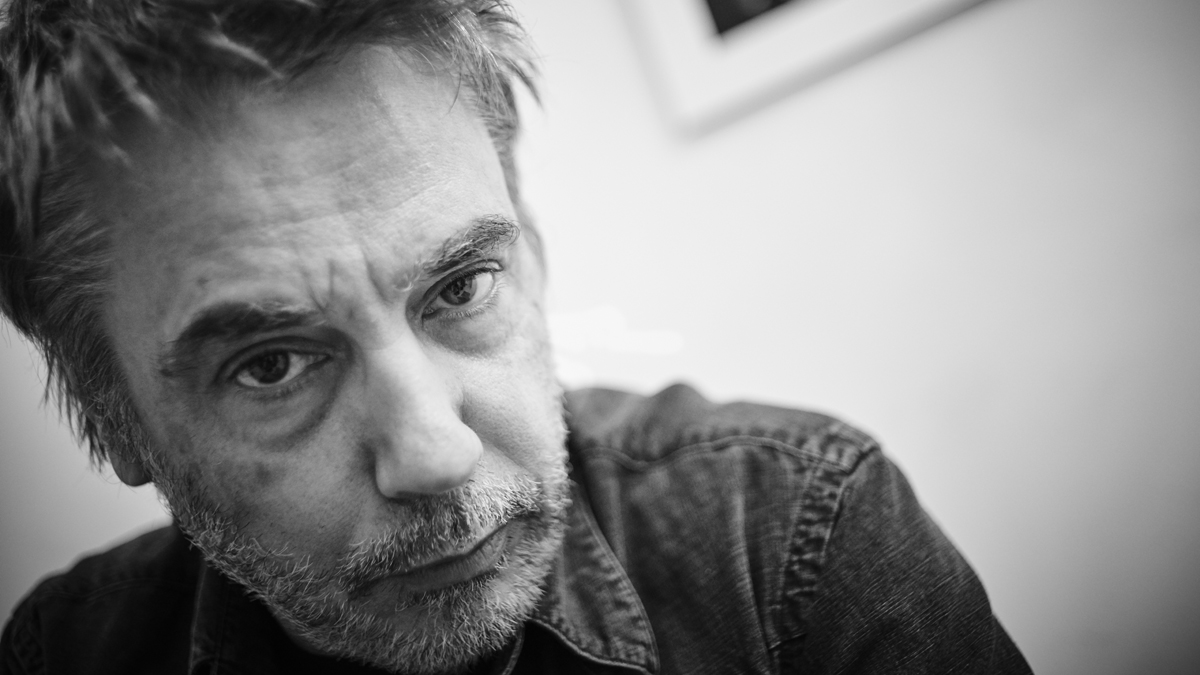
Jean-Michel Jarre
Famed for his stunning live concerts and the multi-million selling album Oxygène of 1976, French composer and electronic pioneer Jean-Michel Jarre is still going strong.
Having studied under visionary musicologist Pierre Schaeffer in the ’50s, Jarre has a unique and fascinating insight into the unfolding history of electronic music, and has continued that legacy of experimentation throughout a career spanning five decades.
This year, Jarre reveals Electronica, a huge project that sees him join forces with an army of collaborators whose own forays into electronic music have played an inspiring role. The first album, Electronica 1: The Time Machine, is released this autumn, with a second volume to follow in April 2016. Meanwhile, Jarre has plans to take it to the road for another live spectacular.
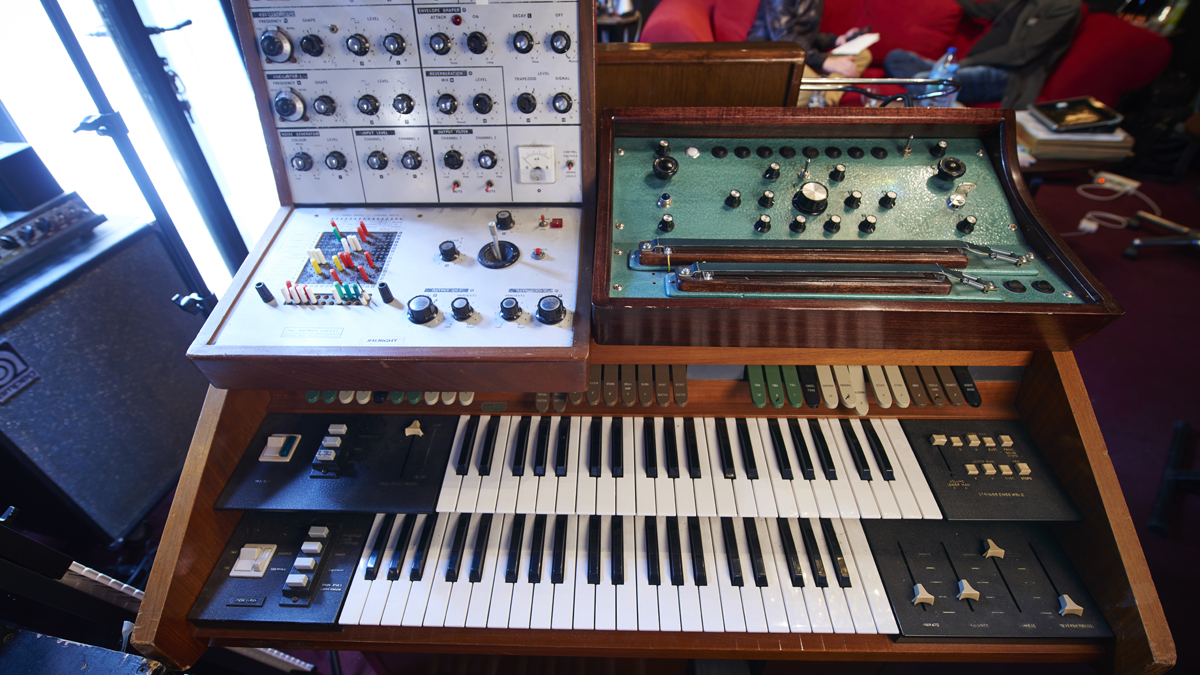
First synth
Can you remember coming across your first synthesizer?
“Yes, actually the real shock I had was my first contact with electroacoustic music when I was a teenager. I went to work in a studio centre in Paris headed by one of the major figures of original electronic music, Pierre Schaeffer.
“I remember my first electronic music instrument, because I have it here. It’s called the Coupigny GRM and I used it recently in a track I did with Air. For me, it was so exciting to approach music for the first time, not in terms of notes but in terms of sounds. And what I got from Schaeffer, Pierre Henry and all those people who created everything as we know it, is the idea of processing sounds – that I could shape my music, shape the sounds and mix the colours as a painter would.
What was your first foray into the synth world?
“My first synth was the Putney VCS3 from EMS, and I remember it was very symbolic for me. I used to play in local Rock bands, but sold my guitar and amp, went to London to visit Peter Zinovieff – one of the founders of EMS, and got my first own synthesizer.
“This was like a dream come true because I could do whatever I wanted. If I had to keep one synth it would be this one, because it’s an absolutely unique synth and a pretty solid piece of hardware.”
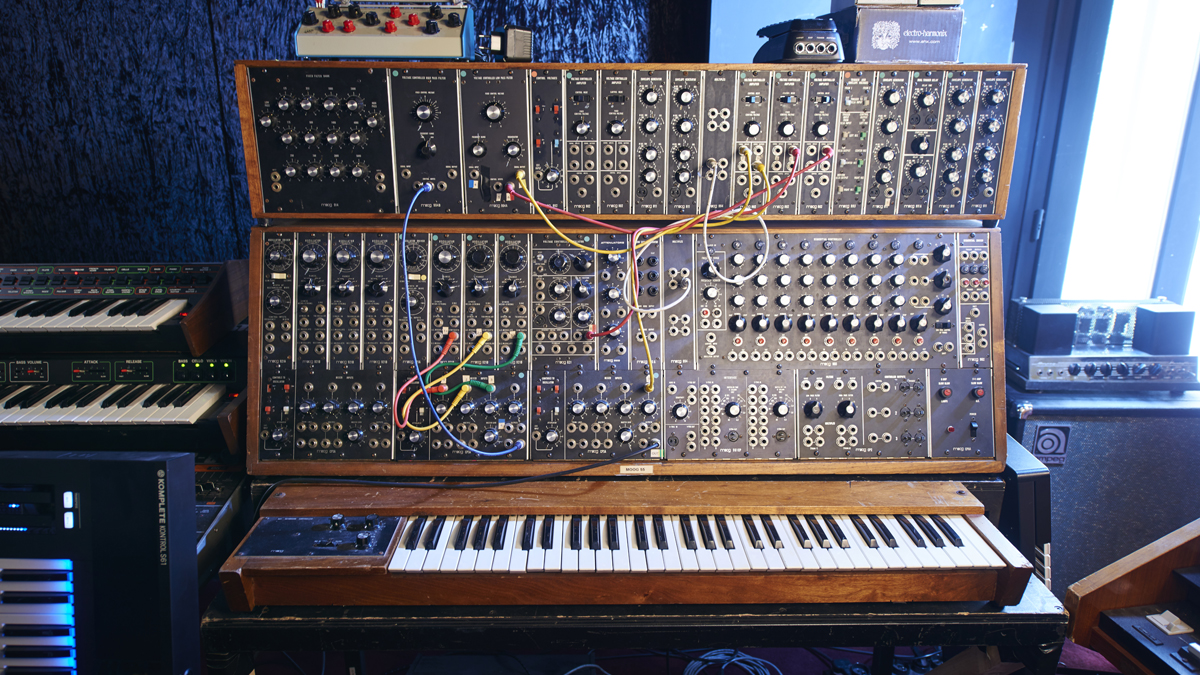
The future
Did you see electronic music as the future?
“Absolutely. When I had the VCS3 in my hands I was convinced that electronic music would become the major genre of music, because electronic music is not like rock or punk; it was and is a new way of approaching music composition, production and, today, distribution.
“When the Moog, Moog System 55 and VCS3 were released, you said to yourself it’s 2001 Space Odyssey or Arthur C. Clarke science fiction, where people are giving you a vision of the future. But after 2000 we suddenly lost our hope vis-à-vis the future. I think that, at the beginning of the 21st century, we have to reinvent the future.
“If you take the movie industry, the vision today is to take Marvel characters and put them in the future. It’s strange that all our parameters are not towards the future but the past, as if we’re a bit scared about it.”
When Synthpop exploded in 1979, everyone was doing Pop songs with lyrics – you never considered adapting to that style of music?
“When electronic pop or rock started in the UK it was through pop or rock songs, whereas in continental Europe it was much more linked to traditional instrumental music; long pieces without lyrics and more in the tradition of classical music.
“The difference I would make between people such as Tangerine Dream, Kraftwerk and myself is that, in Germany people had a very cold, robotic approach to technology. Tangerine Dream were leaving the stage at the end of their concerts and letting the sequencers work on their own; a statement to say that machines are a predetermining concept.
“I always had a more impressionistic approach to sound, coming from Ravel and Debussy. When I did Oxygène I was obsessed that no sounds should be exactly the same; you would die if your beat was identical to another. I was more interested in trying to create a link between experimental music and pop music, but not with lyrics. I always thought that music is the most interactive art form, so why give a precise image to your music? For example, the two of us in this room are listening to the same piece of music, but we have different images in our mind, and I love this type of interaction with music.”
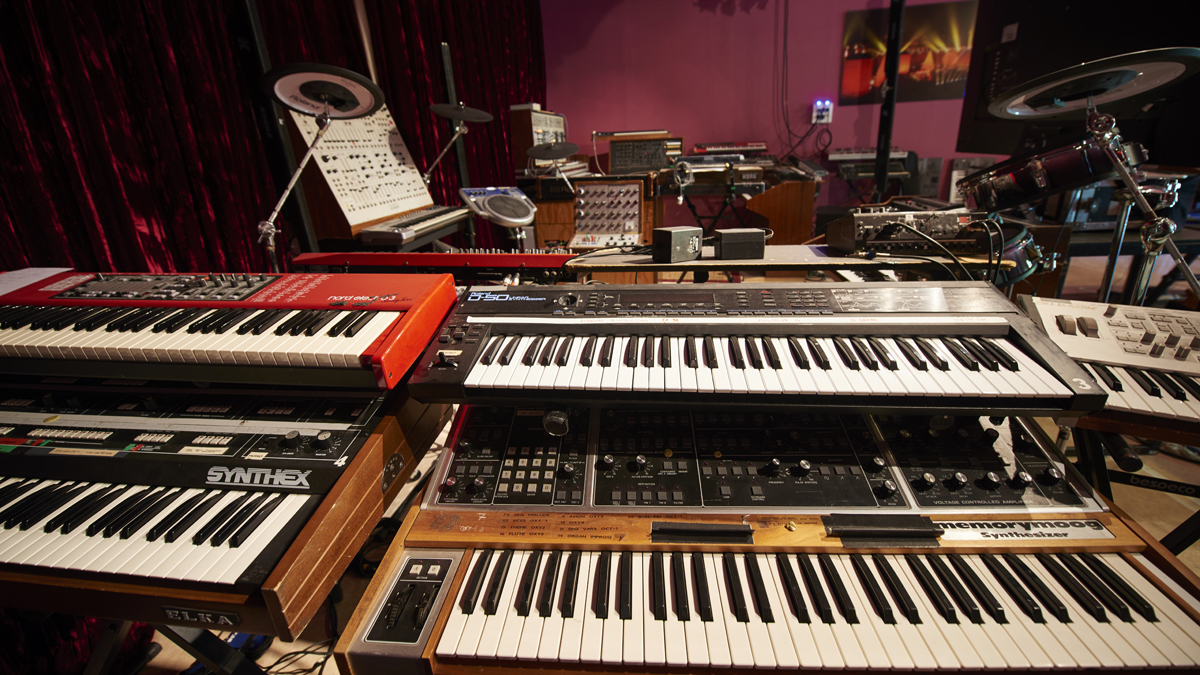
Digitally speaking
When digital technology came along, did you embrace it as eagerly as you had analogue?
“In terms of instruments, I think that electronic music went through some difficult times. It’s linked with the CD actually – the phenomenon of leaving vinyl and thinking that CD was the Holy Grail of technology, yet we know today that it was worse than vinyl, and MP3 is worse than CD, which was the 78 of the digital era.
“It’s the same with the Japanese digital instruments. When the Yamaha DX7 was out, everybody thought that this was the future and analogue instruments were behind us. Everybody said it’s great, because you have presets, you can do whatever you want, but you were not as free to create the sounds you wanted in an intuitive way.
“Digital spent 15 to 20 years trying to compete with the warmth and sound of analogue, but only in the last five years with plug-ins like Diva, Dune, Monarch, Omnisphere and the Native Instruments ones, is there a real new way of competing with the analogue Moog, Memorymoog or ARP 2600.”
In what way are plug-ins competing with analogue, other than merely replicating them?
“I think that the human brain is a fantastic chemical product, but you can cheat it. Like with cinema you see an image moving at 24 or 25 frames per second, but it’s actually a series of stills going so fast, you feel it’s a movement but it’s not. It’s exactly the same with digital; we now have so many ones and zeros that the human brain can hardly tell the difference.
“I always thought exactly what you thought, that because electricity is going through things you can’t replace it. It is true and will always be true, but why do you necessarily want to do the same? It’s funny how, for marketing and nostalgia, all the interfaces of plug-ins are trying to imitate vintage instruments, but now I think it’s time to have something else.”
In terms of digital software, you’ve been quoted as saying, “the lack of limitations is very dangerous”. Can you expand on that?
“Absolutely. I feel that any art form is made of limits. In the ’50s the speed of the 78 meant you could only get three-minute Elvis Presley songs, so the single format was created. When LPs came along, people like Pink Floyd or myself were able to do a piece of music 20 minutes long.
“Now, because of Native Instruments’ Massive plug-in, Skrillex and Dubstep exists. So technology is dictating the style, not the reverse. My advice to a beginner would be to choose a plug-in you like and, as an exercise, stick with it for six months. Don’t explore anything else, but explore it to the maximum and you will see how you can express yourself in such an efficient way.”
Did you deliberately limit yourself?
“I just had the VCS3, the Eminent String Synthesizer, an ARP Solina, RMI Harmonic Synthesizer and a Korg MiniPops, that’s all – and an ARP 2600. I mean you could spend a whole life with this, but the danger today is that since the beginning of this conversation 100 new plug-ins are probably available on the internet, and by the end of the day they will be history because they will be replaced by 500 others.
“This kind of vertigo that the market is creating generates the idea that you’re always late with technology, but at the end of the day, the only interesting thing you can do is going to come from yourself, not the instruments you use.”
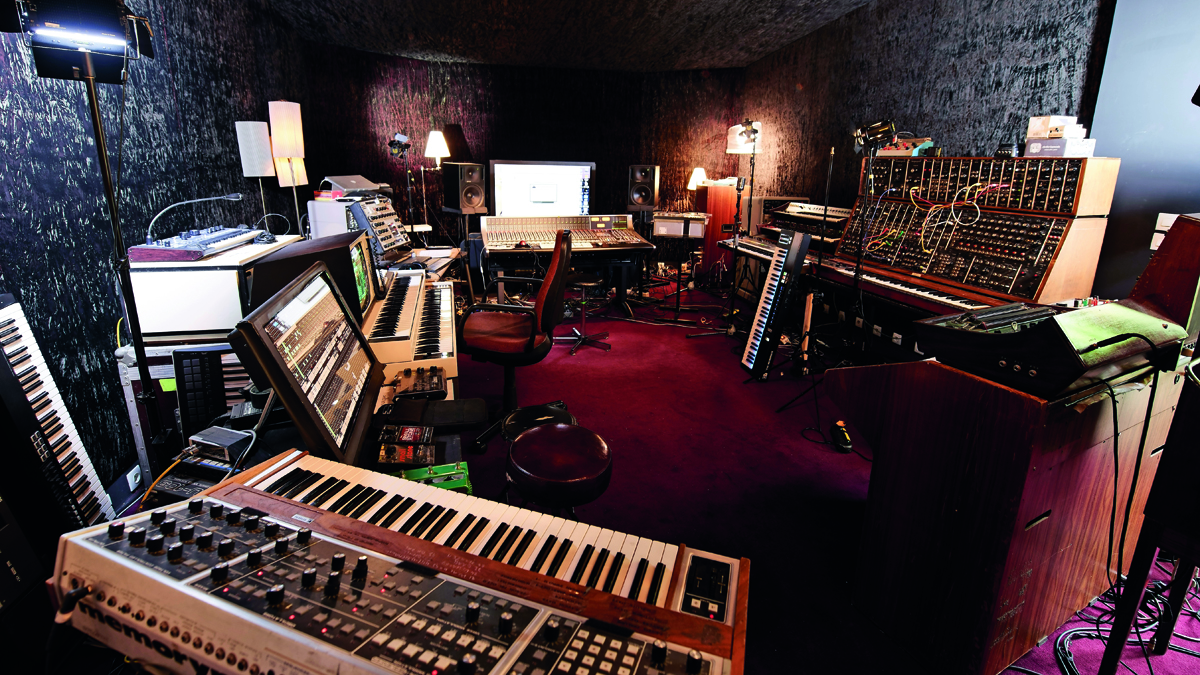
Surrounded in sound
When you wrote Aero in 2004, it was the first time anyone had released an album for 5.1 surround systems. Did it succeed?
“I think that project is one of the rare albums to be originally conceived in 5.1, because you have lots of things in 5.1 that are basically coming from stereo tems and transformed later in the final mix stage.
“I really did invest in 5.1 systems from the beginning, and it was a good exercise for me because I could not even find a sound engineer able to mix what I had in mind. But nobody is interested in getting 5.1 at home for a very simple reason – 5.1 works when you are in the middle, but rarely is anyone sitting in the middle of a room. It’s like 3D. I was one of the first to do concerts in 3D but now I can’t stand 3D in movie theatres.
“The fact that you need glasses means that you lose 60% of the light. The real 3D for movies will be when you have no hardware.”
Are you still experimenting in 5.1?
“For my new album, Electronica, you will have available some audio 3D bonus tracks. It’s actually a new technology that I am working on, without any app or hardware or silly Blu-Ray 5.1 that nobody listens to anyway.
“It is quite a complex algorithmic system, where you can create a real surround environment. I think this is important because, whatever we think, we are still in the dark ages of sound, listening on tiny, tiny speakers on our smartphone. High-definition sound is not a luxury; we are born with HD ears, so we should also have that equipment.”
Will 3D audio change how we listen to music?
“In terms of our sound environment, we were in mono a long time ago, then a very clever guy invented stereo in the middle of the 20th century. But stereo is not natural; it’s a fake system with a phased point to give you the impression of space, but this is not actually what you find in nature.
“With this audio 3D experiment that will be accompanying the project, we can clearly see the difference between the standard stereo version and a totally different approach to listening to sound. I would really like to develop this so that young producers and composers can make music in a totally different way.”

New album
Electronica is your first studio album in eight years. Why the delay, and what was the ideology behind the album?
“The project became much wider than I thought and that is the reason why it will be a little bit like Kill Bill 1 and Kill Bill 2, with the second volume being released in April 2016. It took me a lot of time to do this project because I wanted to make my next studio album a true collaboration with people who have been a source of inspiration to me in the past – artists who have been linked directly or indirectly to the electronic scene for decades.
“The concept is that we think we are connected to the world, but we are not talking to our neighbour anymore. I wanted something that was the opposite to the trendy way of sending files to the other side of the world and not even talking to the other guy who will do a vocal or bassline. With the idea of physically travelling all over the world to meet people, I realised that, as musicians, we are quite isolated and it’s very rare that you can start a project from scratch together.”
Who are some of the artists you have teamed up with on your travels?
“I travelled to Germany to meet with Tangerine Dream, took a car to Berlin to meet with Boys Noize, to London to meet Pete Townsend, Fuck Buttons and Little Boots, Bristol to meet Massive Attack, Brooklyn to meet with Vince Clarke, and Los Angeles to meet with people like Moby, David Lynch and John Carpenter.
“It was really to try to connect in a different way, to share emotions and experience experiments in the studio, such as in Paris with Air, who also came to my studio here. I had no idea whether people would accept, but they all said yes.”
How did you approach the composition?
“Before I went to meet with people, I composed a demo thinking about the collaboration and what they could add, but also leaving enough space for them to complete the track. Looking back, I’ve been quite astonished at how they have been very respectful of what I gave them, trying to really go into the concept as an experiment for them. In some cases, we changed the track entirely.
“For instance, with Robert Del Naja of Massive Attack, he was quite keen but it took months going nowhere. So suddenly I said okay, we are going on the wrong track and did something entirely different, and that was it; we finished the track very quickly.”
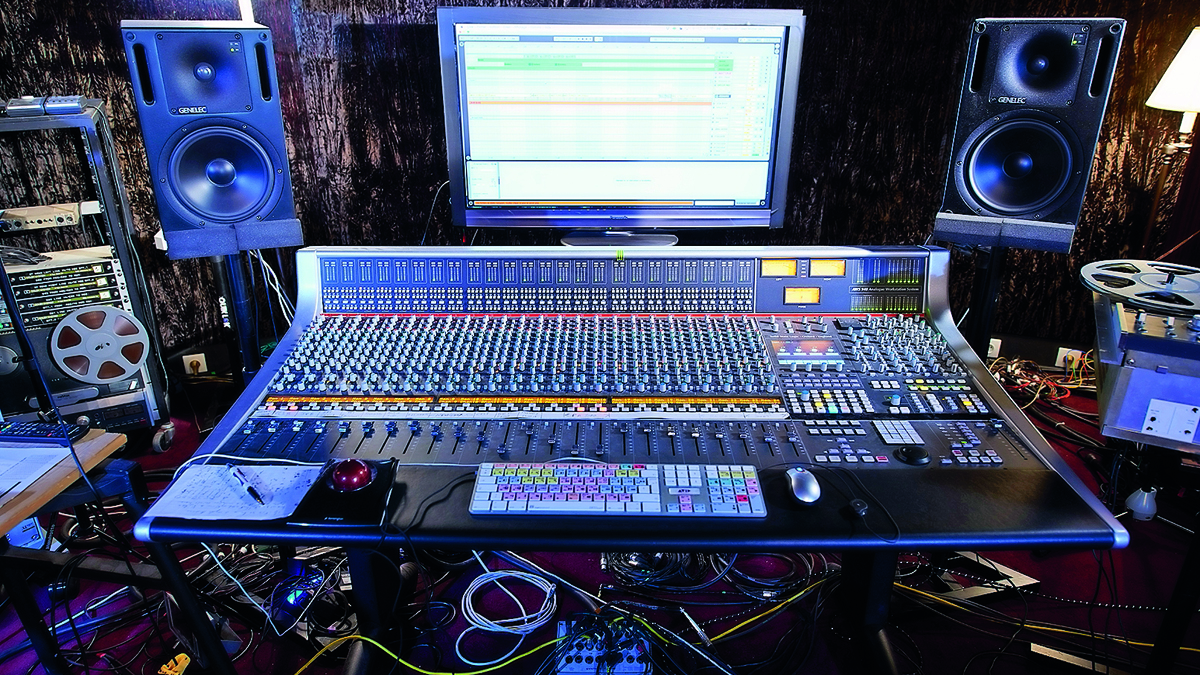
Mixing
With the mixing process, was there a crossover in technologies or did you finish it all yourself?
“I mixed a lot of it in LA at Paramount Studios and also in Paris. I was quite concerned as, at the end of the day, it’s a Jean-Michel Jarre album, so how could I create a unity between the work of Massive Attack, Pete Townsend, Little Boots, Fuck Buttons or Air?
“All these collaborators have an instantly recognisable sound. You listen to 30 seconds of Moby and you know it’s Moby. I was in the studio with him and he was playing a simple E minor – three notes like everybody can do – and it was Moby; and he told me it’s the same when I was playing some chords.
“I started with Pro Tools, but sometimes had 90 or 100 tracks, and that created some difficulties. So I had to try and get less because, as we know, less is more.”
Was this the reason that you switched to using Ableton to complete the project?
“Yes, because I think these days it is the best for what I want to achieve. I’ve been really fed up with Pro Tools; lots of studios are complaining that the maintenance costs more than the maintenance of the rest of your studio, and the fact that it’s heavy. What I liked so much about Ableton Live 8 is that it’s really for DJs, but in terms of audio quality, Ableton 9 is one of the best-sounding DAWs I’ve ever heard. When you do a bounce on Pro Tools you are losing something, but absolutely nothing on Ableton Live if you know one or two tricks. And also for flexibility; when I was travelling I did everything on a MacBook with a 1 terabyte drive and two 1 terabyte SSD external hard drives and it was perfect.”
Do you use Ableton purely as a sequencer or do you use the software plugins and VSTs?
“I’m a big fan of the VSTs from Live. I’m also using a lot of other audio units and VSTs apart from Ableton Live – and you can say the look of Ableton is not the sexiest in the world, but they work very well. Even compared to plug-ins from other companies, the Glue compressor is great and the reverb and EQ is great, and not too greedy in terms of CPU. I used them a lot in the mixing, processing and even production.”
Do you mix on an SSL desk, not in the box?
“It’s a very interesting question because I started using the SSL a lot, but along the way I started to use it less and less. Even ten years ago I would not consider using the mouse to do the job, but on this album I used the SSL for recording and some premixing at the beginning, but all of the final stages I did in the box.”
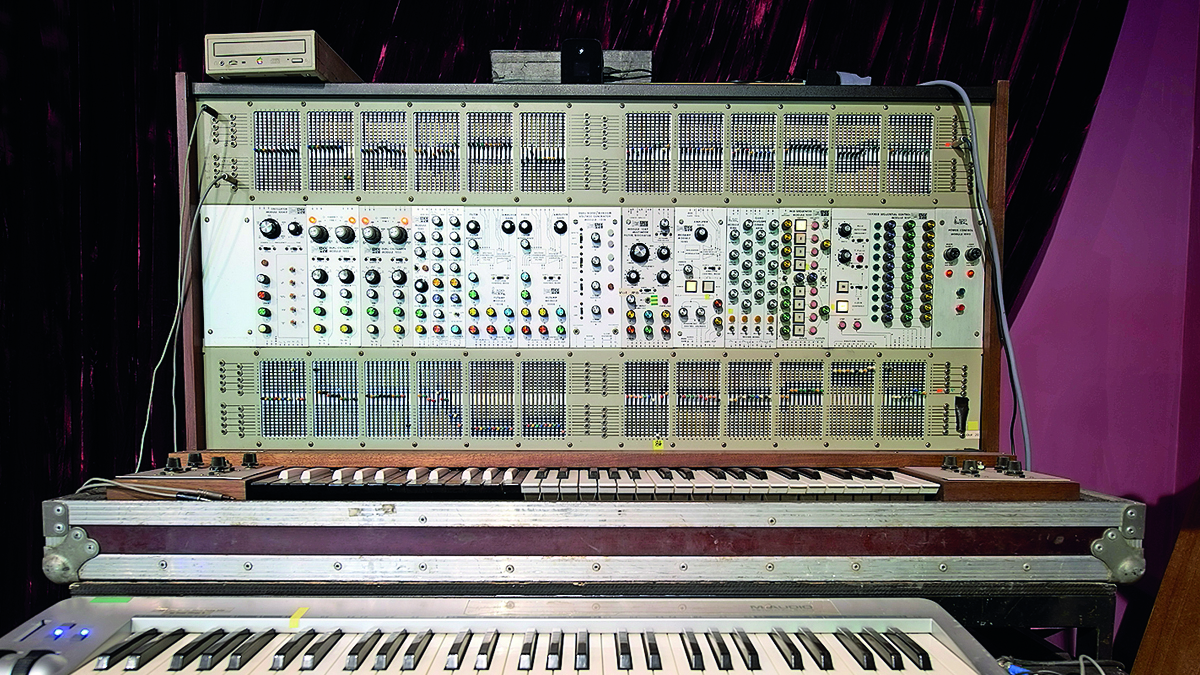
Favourite gear
When you start on a project, what is your go-to gear? You have so much...
“What you see here is not necessarily the gear I’m using all the time. I like to change a range of gear depending on the project and depending on the track. So you could come back in a month and the instruments around me will be fairly different.
“When I look back at this project – which has been massive in terms of production, the biggest I have been involved with in my life – I used external analogue synths and plugins in equal part.”
Which are your favourite analogue synths?
“My favourites are the ARP 2600, the Memorymoog, the Eminent Solina, the Synthi AKS and VCS3, and also the Swarmatron, which is more recent but something I really like. I like synths like the Korg Micro-Preset – the old one, nothing to do with the MicroKorg – and lots of drum machines. In the big studio, I have an ARP 2500 and I also used the Fairlight CMI for the project with Air.”
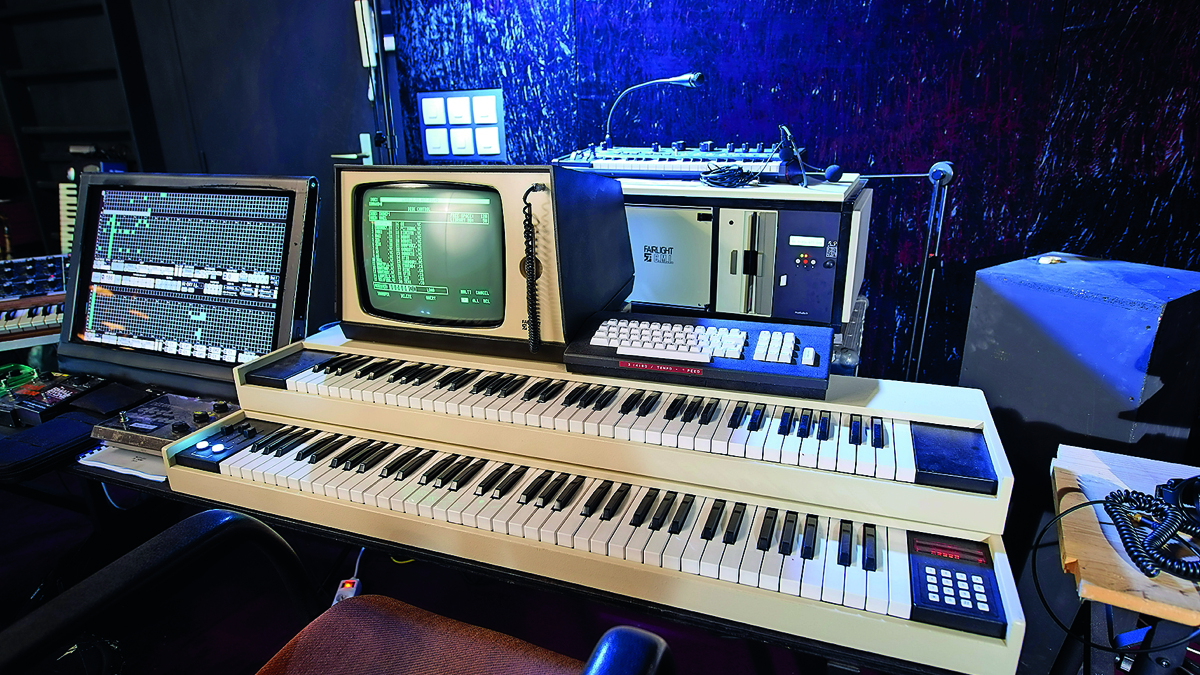
Light as a Fair-ther
Why did you return to the Fairlight?
“When we talked I said, okay, why don’t we do something that is more than a track by Air and JMJ? One track visiting all the generations of instruments, starting from the first way of doing sounds back in the ’50s, even tape loops. In those days, we had no sequencers, so to make a loop we used sellotape.
“If you have 120bpm for two bars, you could calculate the length of tape of an eighth or fourth note, add your bass drum or snare recording and by cutting the physical length of tape make a physical loop, put a mic stand in front of you and press record. That would play the loop infinitely and was how the first loop was ever made. So we started the track like this and then moved to the first Modular Moog, the first analogue monophonic, the analogue polyphonic Elka Synthex and Memorymoog, the Fairlight CMI and the E-mu Emulator II.
“Then we used the Roland D-50, Korg M1, some plug-ins, and the last sound of the track is done with the iPad. We didn’t do everything in that order, but in the track we have all of these instruments, and the challenge we had was that everything should sound coherent.”
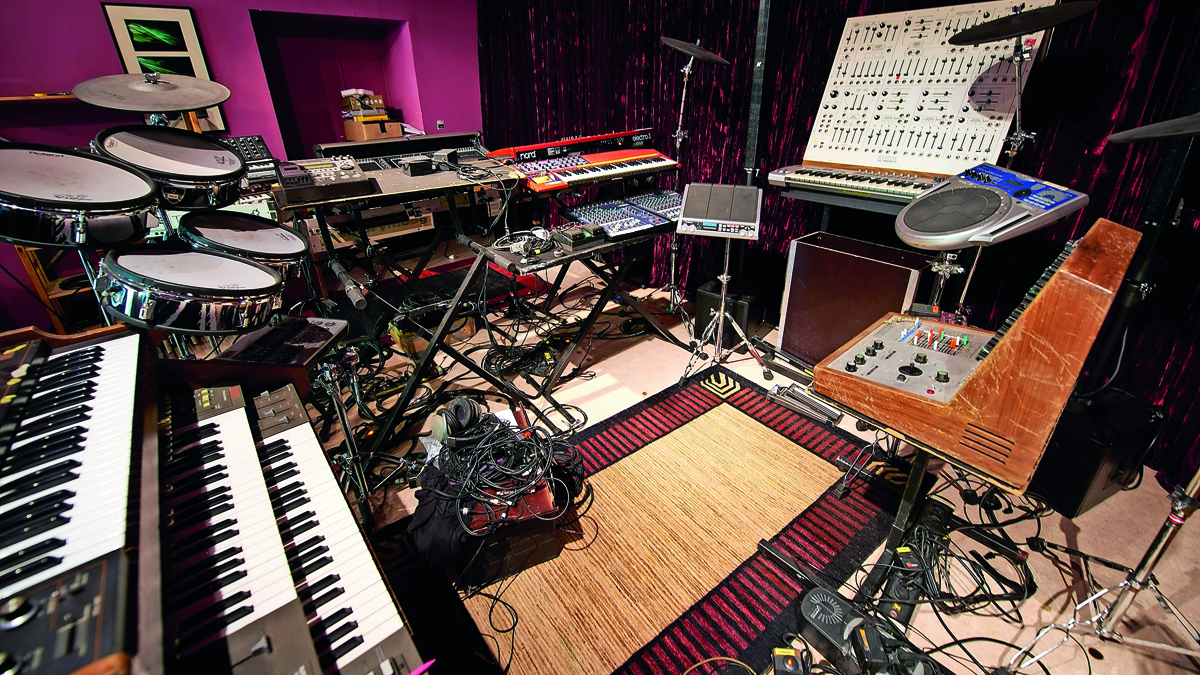
Touring
Is it possible to play this album live?
“Yes, I’m thinking seriously about starting touring next year. We have a lot of instrumental tracks, which are not a problem. Tangerine Dream is special because Edgar Froese passed away a few weeks after this track, so this is the last track from Tangerine Dream.
“A track like this or Fuck Buttons, and other tracks from the second album, are not a problem. Lots of these artists are also using their vocals as an instrument but not purely as a singing performance, so it’s not that difficult to do it, and some of the collaborators will join me on stage when they can.”
When you’re playing live in front of three million people, what are the emotions you’re feeling – is there a disconnection?
“It’s strange what I’m going to say, but I feel more and more that the performance experience is a kind of love affair between two entities, the audience and whatever is happening on stage.
“Sometimes it’s more intimidating to be in front of 200 people than a big crowd in a stadium, or even bigger, as suddenly it just becomes one entity. When you are in a club with a small audience you are much more exposed – but it’s not a matter of disconnection; I think you can really create a very strong emotional link with a big crowd.
“I remember the moment in Moscow when I did that concert in front of more than three million people. It was the night of Princess Diana’s funeral, and I knew her and we were all quite emotionally affected by this. I had this track that I knew that she liked, so I decided to dedicate it to her and suddenly all of the crowd, not saying one word, were just lighting candles.
“Moscow is not London – it’s far away, culturally and geographically – so to see that crowd dancing uncontrollably then stopping, this is exactly the magic of performance. It was such an emotional shock that I couldn’t play for one minute. So I would say that it can be the reverse of disconnection, suddenly it’s one entity all together, sharing the same moment emotionally.”
Electronica 1: The Time Machine is out now on Music Affair/Sony. For more information check out the Jean-Michel Jarre official site.
Future Music is the number one magazine for today's producers. Packed with technique and technology we'll help you make great new music. All-access artist interviews, in-depth gear reviews, essential production tutorials and much more. Every marvellous monthly edition features reliable reviews of the latest and greatest hardware and software technology and techniques, unparalleled advice, in-depth interviews, sensational free samples and so much more to improve the experience and outcome of your music-making.


